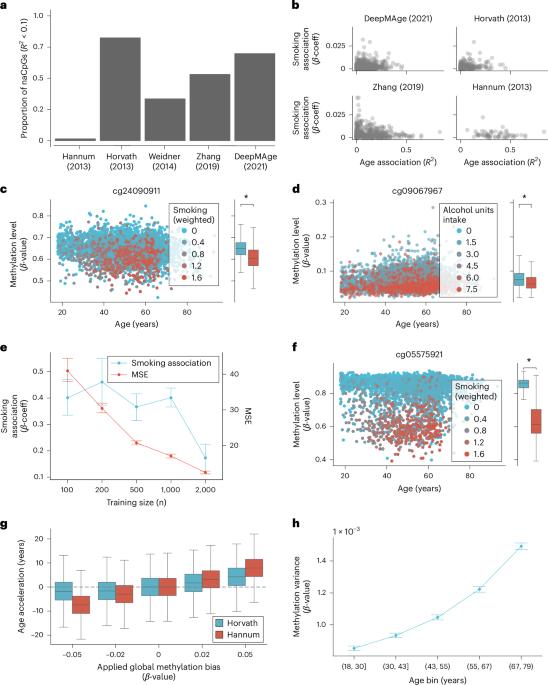Probabilistic inference of epigenetic age acceleration from cellular dynamics
IF 17
Q1 CELL BIOLOGY
引用次数: 0
Abstract
The emergence of epigenetic predictors was a pivotal moment in geroscience, propelling the measurement and concept of biological aging into a quantitative era; however, while current epigenetic clocks show strong predictive power, they are data-driven in nature and are not based on the underlying biological mechanisms driving methylation dynamics. We show that predictions of these clocks are susceptible to several confounding non-age-related phenomena that make interpretation of these estimates and associations difficult. To address these limitations, we developed a probabilistic model describing methylation transitions at the cellular level. Our approach reveals two measurable components, acceleration and bias, which directly reflect perturbations of the underlying cellular dynamics. Acceleration is the proportional increase in the speed of methylation transitions across CpG sites, whereas bias corresponds to global changes in methylation levels. Using data from 15,900 participants from the Generation Scotland study, we develop a robust inference framework and show that these are two distinct processes confounding current epigenetic predictors. Our results show improved associations of acceleration and bias with physiological traits known to impact healthy aging, such as smoking and alcohol consumption, respectively. Furthermore, a genome-wide association study of epigenetic age acceleration identified seven genomic loci. Epigenetic clocks estimate biological age; however, the underlying processes are incompletely understood. Here the authors developed a model that describes methylation changes at the cellular level to provide a biologically interpretable predictor of epigenetic age. They reveal acceleration and bias components, and links with health traits.

从细胞动力学推断表观遗传年龄加速的概率。
表观遗传预测因子的出现是遗传科学的关键时刻,它推动生物衰老的测量和概念进入定量时代;然而,尽管目前的表观遗传时钟显示出很强的预测能力,但它们本质上是数据驱动的,并非基于驱动甲基化动态的潜在生物机制。我们的研究表明,这些时钟的预测容易受到一些与年龄无关的混杂现象的影响,从而使对这些估计和关联的解释变得困难。为了解决这些局限性,我们开发了一个描述细胞水平甲基化转变的概率模型。我们的方法揭示了两个可测量的成分,即加速度和偏差,它们直接反映了潜在的细胞动力学扰动。加速度是 CpG 位点间甲基化转换速度的比例增长,而偏差则与甲基化水平的整体变化相对应。利用来自苏格兰一代研究的 15900 名参与者的数据,我们建立了一个稳健的推断框架,并证明这是两个不同的过程,对当前的表观遗传预测指标造成了混淆。我们的研究结果表明,加速和偏差与已知会影响健康老龄化的生理特征(如吸烟和饮酒)之间的关联有所改善。此外,一项关于表观遗传年龄加速的全基因组关联研究确定了七个基因组位点。
本文章由计算机程序翻译,如有差异,请以英文原文为准。
求助全文
约1分钟内获得全文
求助全文

 求助内容:
求助内容: 应助结果提醒方式:
应助结果提醒方式:


